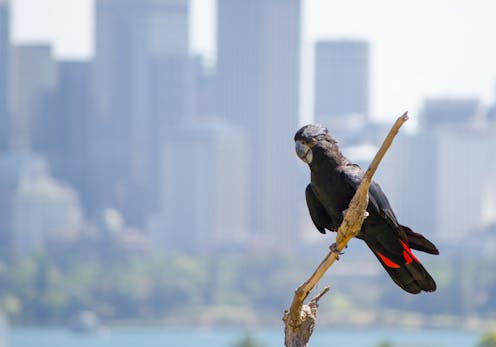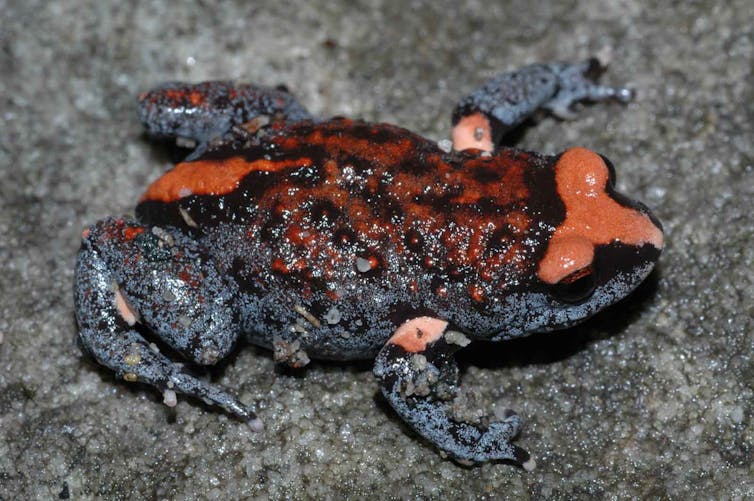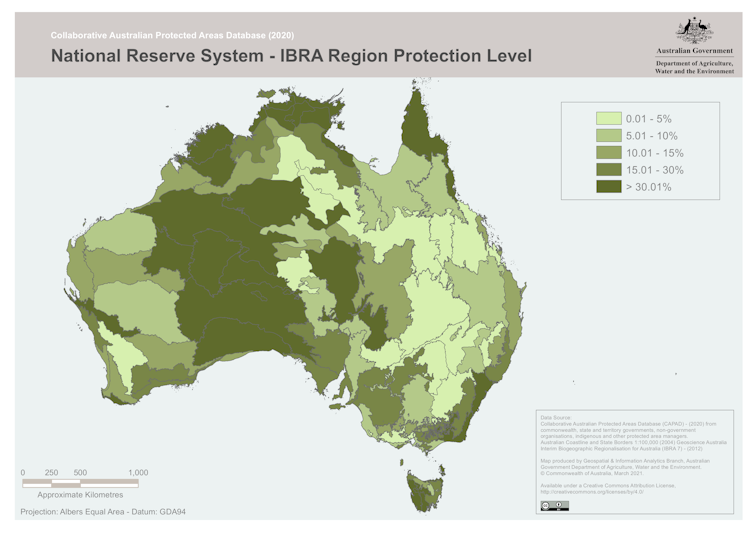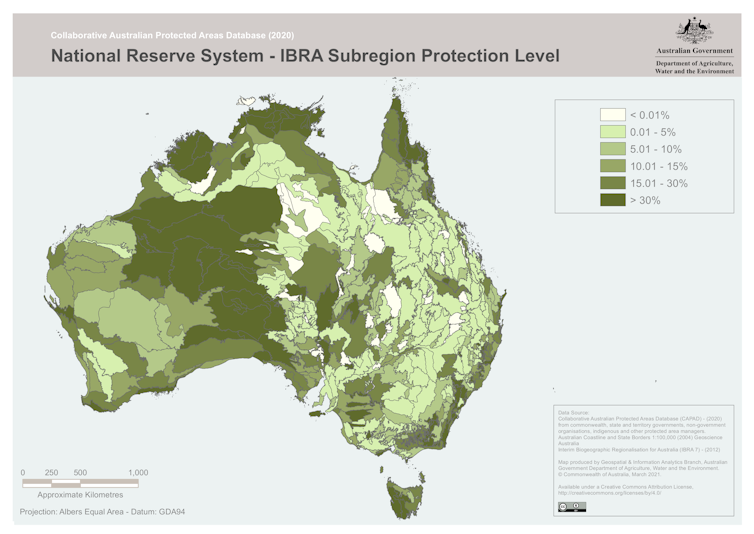Source: The Conversation (Au and NZ) – By Simon Kilbane, Senior Lecturer, Landscape Architecture, Deakin University

Shutterstock
The global 30×30 target aims to protect 30% of the planet by 2030 to secure its biodiversity. This involves legal protection for land and sea areas designated as national parks and nature reserves. Australia has joined more than 100 countries in this bold initiative.
However, if we are to adequately protect all species, we must acknowledge we never start with a blank slate. As a major academic review of fragmented ecosystems observed:
“Conservation managers must work with the remnants and virtually never have the opportunity to design a reserve network before an area is fragmented.”
The areas we choose to protect must include ecosystems where biodiversity is under pressure from human land uses. Australia’s urban areas still have a surprisingly high level of biodiversity.
Our major cities are home to almost 380 threatened species. They range from the western ringtail possum, koala and grey-headed flying fox to the orange-bellied parrot, red-crowned toadlet and several orchids. Indeed, 39 endangered species are found only in our cities and towns.
These urban areas also include threatened ecological communities such as the banksia woodlands of the Swan coastal plain in Perth and blue gum high forest of the Sydney region.
So, what does the 30×30 target mean for our cities and how we protect their biodiversity?

Wikimedia Commons, CC BY
Read more:
The 39 endangered species in Melbourne, Sydney, Adelaide and other Australian cities
Many areas are poorly protected
To protect biodiversity it’s not enough to simply protect 30% of land in general. Australia’s National Reserve System prescribes a comprehensive, adequate and representative approach. This divides the country into 89 distinct bioregions and 419 subregions.
The latest data suggest that simply achieving 30% protection for all these areas will be difficult.
As the maps below show (dark green areas have 30% or more protection), Australia meets this target in only 29 of its 89 bioregions, and 96 of 421 subregions. Is this is an improvement from a decade ago when a modest target of 10% protected area had been achieved in only 57 of 89 ecoregions?

Source: Department of Climate Change, Energy, the Environment and Water

Source: Department of Climate Change, Energy, the Environment and Water
Even the 30% target may not be adequate. And yet achieving it will be difficult in the face of worldwide challenges such as climate change, invasive species and the issues of resourcing and managing an ever-expanding network.
Read more:
Protecting 30% of Australia’s land and sea by 2030 sounds great – but it’s not what it seems
How do we protect urban biodiversity?
Adequately protecting biodiversity in the cities and towns where most Australians live will be especially difficult.
For example, a cursory look at protected area data for Sydney, situated across one bioregion, Sydney Basin, suggests good progress, with 40.99% of its area protected.
However, at the level of its subregions, the picture is different. Pittwater (31.62%), Yengo (58.55%) and Woollemi (71.81%) have high levels of protection. But look at how little land is protected in the subregions that sit entirely within Sydney proper – only 3.13% for Cumberland.

Map by Simon Kilbane using Commonwealth data
The picture is similar across all of Australia’s urban areas. To achieve comprehensive, adequate and representative protection of our biodiversity, we are going to have to think differently. How can we better plan our urban landscapes, or perhaps retrofit these areas, to provide habitat for our imperilled species?
5 approaches to protecting biodiversity
Here are five approaches drawn from practice around Australia and the world that could help.
1. A philosophical reframing
Biodiversity protection should not just occur in remote regions. It’s an issue closer to home. Urban and commercial development directly threatens 56 of Australia’s 255 flora and fauna species on the IUCN Red List of Threatened Species.
2. Green infrastructure
Green infrastructure can create a network of urban forest, foreshores and creek lines, parks and open spaces. In this way, we can reconnect fragmented habitat patches. This interconnected network has both ecological and human-related benefits.
Bolstered by a healthy groundswell of public and policy support – who wouldn’t want more green space? – there’s a growing momentum to reshape our cities. Notable initiatives include the Perth Biodiversity Project, the Sydney Green Grid and Melbourne’s Urban Forest Strategy.
The benefits for ecosystems come from water retention and flood management and increasing plant cover – so important for reducing urban heat island impacts. People’s mental health and wellbeing benefit from spending time in these green areas. Evidence even suggests greener streets and suburbs have higher real estate values.
Read more:
Here’s how to design cities where people and nature can both flourish
3. Creative conservation choices
Finding conservation candidates in urban areas requires imagination and creativity. Why not consider disused industrial lands, cemeteries, poorly frequented golf courses, our roof tops and the ubiquitous suburban nature strips?
If we radically reconfigured or “rewilded” our streets and gardens we could create more urban habitat. More diverse and local plantings and “backyards for wildlife”-type schemes seem a safe bet.
4. Rethinking our idea of urban development
The above options are the lowest-hanging fruit. What would happen if we radically rethought our profit-driven development model of suburbanisation? We could create a better balance between the habitats of humans and all the other species we share our cities with – as a matter of ecological justice.
We might need to use collaborative tools and scenario planning to visualise possible impacts and benefits. This will help us better combine thinking about people, place and ecology.
5. Fostering ecological literacy
Starting with learning from how Australia’s lands have been managed through traditional ecological knowledge, we need to foster a deeper appreciation of the nature that exists under our noses. Incorporating ecological knowledge into education from as early as possible will build ecological literacy
This might then temper our desire for exotic plantings. We might even have
second thoughts about cat or dog ownership given their impacts: Australia’s 3.8 million pet cats kill up to 390 million animals every year.
It will take a monumental effort to rethink our country and our cities to preserve their biodiversity. Australia has just begun a worthwhile but difficult journey.
![]()
Simon Kilbane is a member of the Australian Institute of Landscape Architects, the IUCN World Commission on Protected Areas and the Government Architect of New South Wale’s NSW State Design Review Panel
– ref. Koalas, parrots, frogs and orchids share our cities. Their fate depends on protecting each one’s habitat, not just 30% of all land – https://theconversation.com/koalas-parrots-frogs-and-orchids-share-our-cities-their-fate-depends-on-protecting-each-ones-habitat-not-just-30-of-all-land-192176







